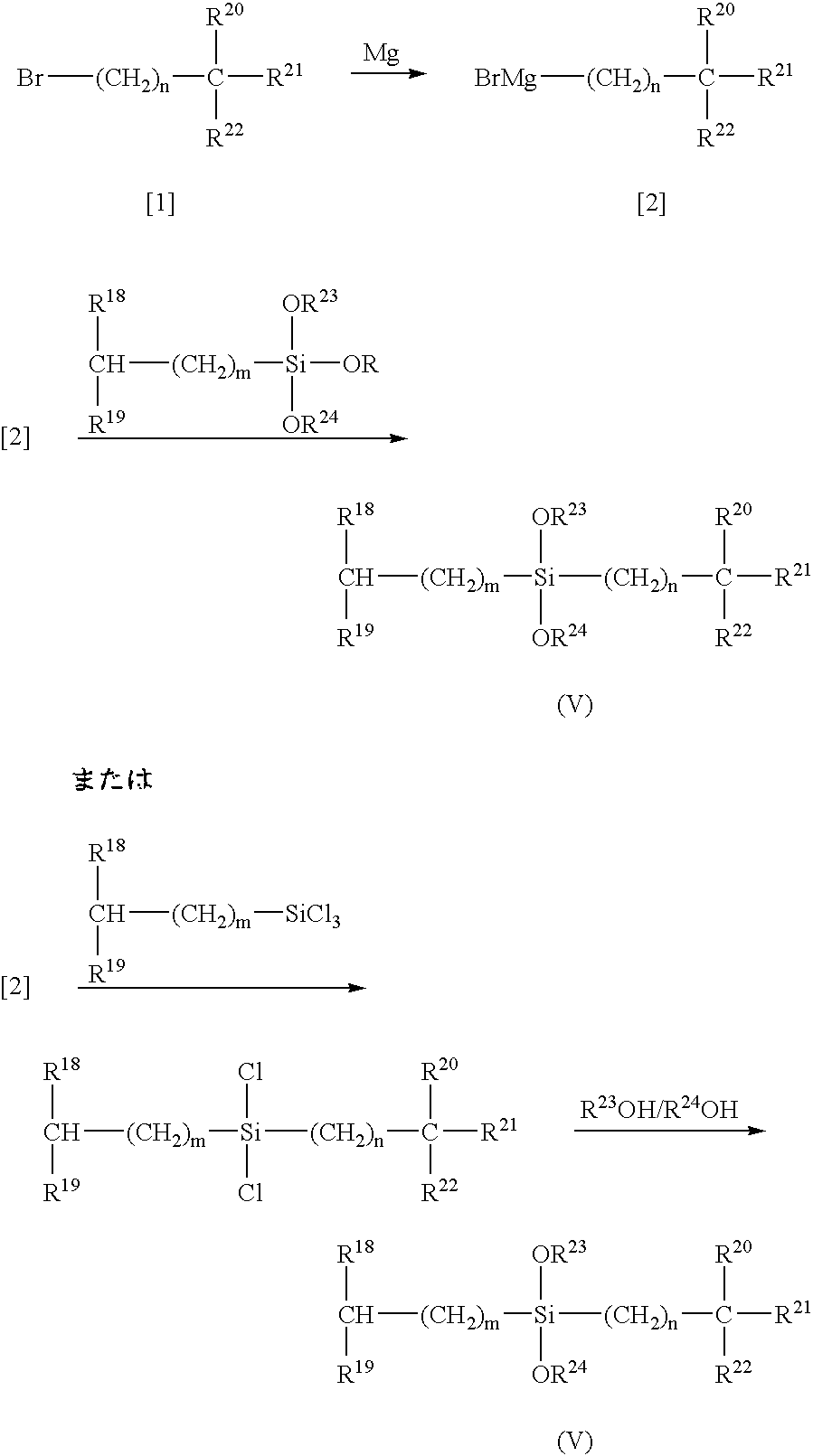Process for producing alpha-olefin polymer
a technology of alpha-olefin and polymer, which is applied in the field of process for producing an alpha-olefin polymer, can solve the problems of reducing the concentration of monomers which can be placed into the reactor, affecting the efficiency of the reactor, and requiring a large amount of hydrogen addition
- Summary
- Abstract
- Description
- Claims
- Application Information
AI Technical Summary
Benefits of technology
Problems solved by technology
Method used
Image
Examples
examples
The present invention will be described more specifically with reference to examples in the following. However, the present invention is not limited to the examples.
examples 1 to 6
In Examples 1 to 6 and Comparative Examples 1 to 3 which are examples of the first invention, the physical properties and the analytical values were obtained in accordance with the following methods.
(1) Intrinsic viscosity (η): A polymer was dissolved into decalin and the intrinsic viscosity was measured at 135° C.
(2) Melt flow rate (MFR): The melt flow rate was measured in accordance with the method of ASTM D1238 at 230° C. under a load of 21.18 N.
(3) Stereoregularity (the fraction of the (mmmm) pentad): A polymer was dissolved in a mixed solvent containing 1,2,4-trichlorobenzene and heavy benzene in a ratio of the amounts by volume of 90:10. The signal of methyl group was obtained in accordance with the method of complete decoupling of proton at 130° C. using a 13C-NMR apparatus (manufactured by NIPPON DENSHI Co., Ltd.; LA-500) and the fraction of the (mmmm) pentad was obtained from the obtained value. The fraction of the isotactic (mmmm) pentad used in the present invention means...
examples 7 to 11
In Examples 7 to 11 and Comparative Examples 4 and 5 which are examples of the second invention, the intrinsic viscosity [η], the content of the fraction soluble in p-xylene and the content of ethylene in the fraction soluble in p-xylene were obtained in accordance with the following methods.
(1) Intrinsic viscosity [η]: A homopolymer portion or a fraction soluble in p-xylene was dissolved in decalin and the intrinsic viscosity was measured at 135° C.
(2) The content of the fraction soluble in p-xylene: The amount of the fraction soluble in p-xylene at 25° C. was obtained in accordance with the following method.
A sample of a block copolymer of propylene and ethylene in an amount of 5±0.05 g was accurately weighed and placed into a 1,000 ml eggplant-shape flask. After 1±0.05 g of BHT (an antioxidant) was added into the flask, a stirrer and 700±10 ml of p-xylene were placed into the flask and a condenser was attached to the eggplant-shape flask. The flask was heated for 120±30 minutes i...
PUM
| Property | Measurement | Unit |
|---|---|---|
| temperature | aaaaa | aaaaa |
| temperature | aaaaa | aaaaa |
| fluidity | aaaaa | aaaaa |
Abstract
Description
Claims
Application Information
 Login to View More
Login to View More - R&D
- Intellectual Property
- Life Sciences
- Materials
- Tech Scout
- Unparalleled Data Quality
- Higher Quality Content
- 60% Fewer Hallucinations
Browse by: Latest US Patents, China's latest patents, Technical Efficacy Thesaurus, Application Domain, Technology Topic, Popular Technical Reports.
© 2025 PatSnap. All rights reserved.Legal|Privacy policy|Modern Slavery Act Transparency Statement|Sitemap|About US| Contact US: help@patsnap.com



